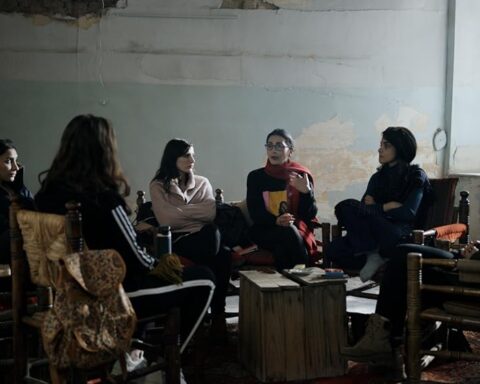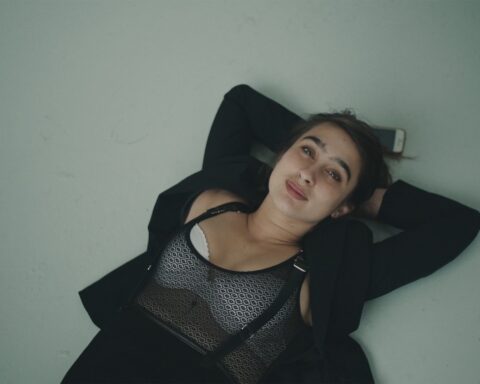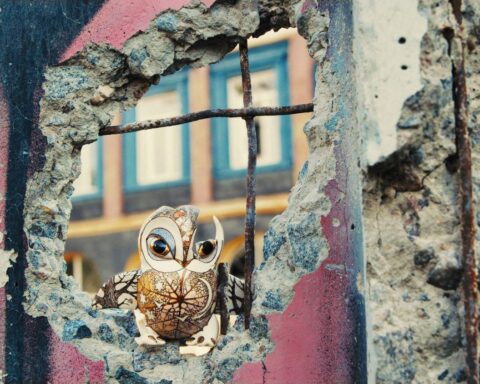When Jeanne Moreau showed up at last year’s Festival International du Film sur l’Art (FIFA) in Montreal, the iconic actress’s appearance “was unreal,” FIFA’s Founding Director René Rozon told me during a break from prepping the 2009 edition (March 19 to 29). “I’ve seen a lot of her films. She worked with all the best directors. Can you imagine?”
The thrill of the encounter had little to do with Moreau’s celebrity. A confirmed aesthete since devouring courses in art history and cinema at the University of Montreal, Rozon is fascinated by artists of all disciplines, and the mysterious ways their work takes shape. “He knows everything about the arts,” says long-time culture publicist Sylvie Deslaurier, who worked closely with Rozon for several years, and now runs public relations at the Montreal Museum of Fine Arts.
Rozon dreamt up FIFA when as the associate editor of an arts magazine, “I would go to festivals and various museums in Europe and see a lot of films related to the arts.” Supported by Montreal’s Museum of Contemporary Art, the project launched in 1981 and became an independent event two years later. The debut edition ran five days, playing 50 movies from 12 countries in the Cinémathèque québécoise. By 2008, the festival had grown into a ten-day showcase of 300 films from 30 countries, drawing viewers to several venues around town.
A competitive festival, FIFA tours selected prizewinners, playing the movies in A-list institutions like the Louvre, Washington’s National Gallery, and the St. Louis Art Museum. This year, the FIFA road show debuts in the Tate Modern and New York City’s Morgan and Public Libraries. The program evolved from Rozon’s sense of purpose. While the more analytical films at FIFA ponder abstruse ideas about various art forms, the event itself does not have a complicated mindset. Rozon wants to sensitize people to all creative expression, while encouraging filmmakers to continue making art docs, preferably smart, innovative ones. Ultra-eclectic, FIFA’s subjects range from George Michael (FIFA 2008) to Boris Ryhzy (2009), a Russian poet so little known that the Amsterdam Documentary Festival (IDFA) jury that gave the film about him an award had never heard of the guy.
Rozon says that he’s not looking for specific subjects and approaches; he’s after quality. “You don’t need a course in cinema to recognize a good film. I think a film imposes itself naturally, and there are no rules in films on art.” On the other hand, “you can hardly make a good film about a dull artist, even if his art is great.”
As for the international festival circuit, Rozon says that even most of the doc fests “don’t have enough substance (when it comes to) films on art. I have a bank of names of production companies I’ve built up over the years, and who still occasionally produce films on art. And that’s how I built up the festival.”
According to FIFA’s director, the art doc is the toughest of documentary genres to finance. “You’re competing with all the other subjects on television,” he explains. For broadcasters, films about art are at “the bottom of the line unless they’re working at Arte France. Are you ready to spend three years of your life for something that will not bring you too much money and a lot of pain?”
The pictures screened at the festival may be painful to make, but they bring great pleasure to its many supporters. Veteran Canadian documentarian Anne Henderson, whose Battle of Wills is a FIFA 2009 pick, enjoys the surprises in the programming and the audiences of curious people who are not just cinephiles or doc aficionados. Sylvie Deslaurier loves the fact that all the arts are represented: “I’ve discovered so many artists, so many ways to feel, to think, explore, and create.” Ultimately, docs about art show people at play. Even if they’re tormented, we discover how they dance, paint, and sing their way out of the confining realities at the core of socio-political and educational documentaries, which don’t often set the subjects or the audience free.
This year, FIFA received 600 submissions that were winnowed down to 260 films from 30 countries, screening in six sections. The movies demonstrate the varieties, possibilities, and sometimes limitations of art docs.
For instance, Erich Schmid’s Max Bill: The Master’s Vision is a cool, clean, detailed feature about the Swiss painter, designer, and architect, who comes through as an embodiment of classical modernism. His roots in the pre-World War II avant-garde, Bill studied at the Bauhaus and was an internationalist anti-fascist who took in refugees from Nazi Germany. The facts about the artist’s life and his explorations of form and space are extraordinary, but the film’s conventionally didactic methods don’t always engage you emotionally—until the powerful ending.
In contrast, Andreas Schultz’s Colville draws you deeply into the subject’s vision and private world. In a movie avoiding talking head experts, Schultz’s pristinely lit, spare images of the artist and his Nova Scotia environment match Alex Colville’s precise paintings, complete with an air of the uncanny lurking under scenes of ordinary life. Direct-tocamera, in voiceover, and interacting with his wife Rhoda, Colville reveals surprisingly intimate aspects of his personal life, and recalls the inspirations for his work.
Like Colville, Adam Low’s The Strange Luck of V.S. Naipaul benefits from the advantage of tracking its still-living subject in the present tense. This is a mesmerizing doc about a writer, the most un-cinematic of artists, whose trajectory from impoverished Indo-Trinidadian student to Nobel prize winner and knighted ultra-Englishman living amidst Wiltshire greenery has a classic narrative flow. Moreover, you’re free to observe this pompous man and come to your own conclusions about the way he has treated women, as well as his apparent condescension toward Third World people, despite his empathetic writing about them. Because Naipaul is linked to three countries with three cultures and travels widely, the film expands geographically, with consistently changing images and sounds.
Also at FIFA 2009, Alessando Bettero’s lavish but conventional historical doc, Carlo Goldoni—Venice Grand Theatre of the World, contrasts sharply with Aliona van der Horst’s Boris Ryzhy. The latter is a genre-busting film that depicts a street-fighting poet far removed from any sort of genteel cultural milieu. When Ryhzy’s sister asks their former neighbours in a grim Russian city’s “Scrap Metal District” if they remember Boris, who hung himself at 26, she’s told to “fuck off.” In yet another mode, Anne Henderson’s Battle of Wills conflates art and literature pursuing what she calls an “art history mystery.” The doc, airing this fall on Bravo, concerns a retired Ottawa engineer who challenged the Shakespeare establishment by claiming a portrait he inherited was made of the Bard during his lifetime.
Other FIFA 2009 highlights include Jon Else’s Wonders are Many: The Making of Dr. Atomic, an epic documentary paralleling the process of creating the San Francisco Opera House’s 2005 production of John Adams’ contemporary masterpiece about Robert Oppenheimer and his creation of the first Atomic Bomb with the story that is the opera’s subject. Also documenting process, Jiansheng Li’s short, Tao Yao, depicts ancient Chinese pottery crafting techniques in a manner that evokes a dance. Another short, Suzie Templeton’s Oscar-winning Peter and the Wolf is a stunningly executed, stop-motion animated adaptation of the Prokofiev composition, more Tarkovsky and Jan Svankmajer than Disney or Pixar. The film exemplifies Rozon’s policy of “opening the festival to artists themselves, and not only films about them.”
FIFA 27 also features docs about Sidney Poitier, Tim Burton, Werner Herzog, Quebec cinematographer Roger Racine, Pavarotti, Rudolf Nureyev, Marie-Hélène Alain, a New Brunswick nun who transformed herself into a sculptress, and Kathleen Annie Pannonica Rothschild de Koenigswarter, aka “Nica,” the “baroness of jazz” who loved and protected Charlie Parker, Thelonious Monk, and other musicians of the bebop era.
Finally, there’s Oliver Axer’s Hitler’s Hit Parade, which FIFA slotted into its International Panorama section. This feature-length picture takes the art doc into delirious territory with its jaw-dropping montages of cornball German pop culture during the Nazi era. When Hitler first appears in shots cut to sweet dance jazz, he’s transformed into a fun-loving toff with an odd fetish for military outfits. Inane kitsch merges with the banality of evil. Sometimes, the art doc knows no bounds.











